Dynamic micro brands - Toms
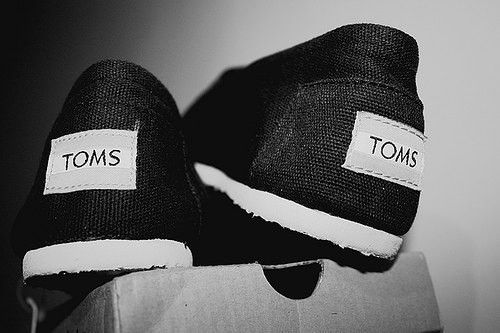
Image courtesy of StephanieNguyen
I’m a bit of a latecomer to the Toms party but then I’m not an environmental activist and I don’t live on the West coast. So I had to wait until the TED Global goodie bag to come across this brand of ethically driven footwear and mighty fine they are too.
Toms was founded three years ago by Blake Mycoskie following a trip to Agentina. Blake was struck by number of children that did not have shoes in the region he was visiting and the health problems that resulted from kids having nothing to protect their feet. One of the leading causes of disease in developing countries is soil transmitted parasites which penetrate the foot through open sores. In addition in many communities wearing a pair of shoes is a condition of being able to attend school.
While many brands and many of the dynamic micro brands that count Adliterate as a fan, have an ethical dimension, the whole premise of Toms was to provide a solution to looking after the feet of kids growing up in endemic poverty. For every pair of shoes they sell they give another pair to a child that needs one. Indeed in the last three years they have distributed 140,000 pairs of shoes in the Argentina, South Africa and the USA (most recently in New Orleans where the issues are somewhat different to developing countries). In 2009 they plan to distribute 300,000 pairs of Toms reflecting the growth and success of the brand.
We have often talked about the key ingredients of Dynamic Micro Brands (hell you could even call them Little Lovemarks if you liked). That they drip with authenticity, having a powerful and understood reason to exist. That product performance is paramount, leading advocates to believe the product to be functionally superior to their competition. And that they often have a clearly articulated idea at their heart that drives both the business and brand. Seems to me that Toms over indexes suitably on all three criteria.
Shoes are distributed on shoe drop visits by Toms’ people and volunteers and so impressed by the shoes and moved by the story that’s what I am going to help do between the 5th and 12th of December in Argentina. If you would like to help me you can donate towards my $1,800 target at here.
Every brand needs an ecosystem
I had the great pleasure, along with the entirety of the North London Croc wearing classes, of spending Sunday at the Innocent Village Fete in The Regent’s Park.
All the usual stuff applies about how lovely Innocent are (too lovely perhaps?) but what interested me was the brand ecosystem that Innocent is nurturing around themselves. Not least, because I have talked about many of the companies in this ecosystem in the posts on Dynamic Micro Brands.

Image courtsesy of Fimb.
Before we get into understading the workings of the Innocent ecosystem its time to give credit where credit is due.This event, which was Fruitstock (a free festival in Regent’s Park for Innocent acolytes) and is now the Innocent Village Fete (a ticketed event to control numbers) is all Innocent's own work - an event they have created themselves and from scratch.
None of your ‘ohh look that thing is popular with the kids so lets sponsor it’ nonsense but a complete brand world created for the explicit purposes of consumer immersion and built up over a number of years. Of course Innocent will say ‘hey go easy we are just having some fun and trying to put something back’, which they are but you’d better believe an event like this functions as a brand baptism for the tens of thousands of visitors. Each one emerging from their ‘dunking’ that bit more convinced about the part Innocent seeks to play in their lives.
Of course Innocent is no longer a dynamic micro brand, it ‘owns’ the UK Smoothies category with something like an 80% share and if it can only reach out from the Croc wearers nothing will stand in its way. They are starting to scare the shit out of the UK beverage market big time.
But coming up behind Innocent are a clutch of brands that, though still small,l share a huge number of similarities with Innocent namely authenticity, product performance, a point of view and a stonking brand idea.
They are brands like Method, Stony, Good Energy, Ocado, Dorset Cereals, Little Dish and the like.
They were there not to sell or even to cross sell (a crass practice that I know thatthe CRMers amongst you love) but to oross pollinate a set of values for a group of customers who love their brands to have a position they can buy into. It’s a pretty safe bet that if you like Innocent you are going to like Dorset Cereals and the identity value that it bestows on you.
Incidentally for all that these brands care about the triple bottom line they are not deep conviction brands but, like Innocent, mezzo-ethical. They care too much about ideas, identity and product performance to be hardcore green.
Add into the mix some perennial stalwarts of the Croc wearers repertoire like the Guardian and Dyson for a bit of credibility and authority and you have something I think resembles an ecosystem, each brand being fed and feeding from the others.
And I loved the whole bang shooting match.
But then I would wouldn’t I.
Dynamic micro brands - Reggae Reggae Sauce
Time for some good old fashioned brand fawning.
Anyone from our business worth their salt knew that when Levi Roots wrapped up his presentation to the Dragons on the BBC's Dragon's Den in March that his Reggae Reggae Sauce was a sure fire bet.
The sauce, so far made only in Levi Root's own kitchen for sale at Nottinghill Carnival, already had all the ingredients of a Dynamic Micro Brand. All it needed was someone to get his distribution sorted and help find a manufacturer to meet the new levels of demand.
Levi's pitch to the Dragons
Even at his original pitch, and despite Levi's poor grasp of some of his figures, one could tell this brand had what it takes - authenticity, product, a point of view and a powerful idea.
Authenticity rules
Reggae Reggae Sauce drips with authenticity. This isn''t a brand concocted in one of those brainstorms I am so fond of, by a large marketing organisation and made to an original recipe by a team of nutritionists in Geneva. It is Levi's own family recipe (passed to him by his grandmother Miriam) which has been tried and tested on the carnival streets of Notting Hill. Levi (real name Keith) had been making it as a labour of love up until the Dragons got involved. His day job was as a successful musician who had been nominated for a MOBO award in 1998 and had played with James Brown.
It just doesn't get much more authentic than this.
Product performance is paramount
It's good. I can't tell you how it stacks up compared to the Jerk sauce my mother makes because my mother is white, lives in Kent and doesn't cook. But to my uneducated palate it does the trick. I think that what we need to remember is that in taste terms Levi is not just aiming to compete with other jerk sauces but with condiments in general whether for the BBQ or not.
Reggae Reggae sauce is going to be the HP Sauce of 21st Century Britain.
It packs a point of view
Reggae Reggae sauce is part of Levi Root's approach to business which appears to be driven by an obsession with giving stuff back to the community. Proceeds from his Reggae Reggae Sauce song went to Comic Relief, he has already diverted much of his profit to causes around him and his first food outlet in Battersea not only aims to deliver genuine West Indian food at decent prices but claims that it will never turn a kid away if they want to eat but have no money. Maybe Levi is just a wannabe philanthropist or maybe just maybe this brand is the start of a far more important socially responsible food movement.
The opening of Levi's first food outlet - Papine Jerk Centre in Battersea.
There is an idea behind the brand
I guess the idea behind the brand is about putting music into your food - that's the line on the bottle at least. And there is a real sense that he wants to put joy back into food and particularly to spice up jadded British palates. And of course one also has to recognise the instinctive genius of naming this Reggae Reggae Sauce in the first place - its as good as Innocent if not better in the naming stakes.
And as for success? With the help of the Dragons Levi secured a listing in Sainsbury's a couple of weeks after the programme was made and the brand hasn't looked back.

Repackaged since the pitch on TV the brand hit the shelves in March and masssive demand made a shift to outsourced production necessary very quickly. Production, which Levi says has now passed the million bottle mark, is handled by a manufacturer in South Wales and overseen by Levi. Accurate sales figures are not easy to come by but Sainsbury's claim sales of 150,000 bottles on the first day of listing. The key issue now appears to be stock availablity.
Dynamic micro brands

The Swallow tailed hummingbird. Like most dynamic micro brands they are small agile and very fast. Image courtesy of Flavio Cruvinel Brandao
So, I have been obsessing recently about cool and funky little brands like Method, Hendricks, Riverford Organic Vegetables, Dorset Cereals, Good Energy and the like.
And I thought I might draw some conclusions about what is going on and the things that unite them.
The intention is to provide some learning for other brand owners, especially when they are approaching NPD projects.
I have decided to call this little bunch of businesses dynamic micro brands.
This is in part a homage to Hugh at Gaping Void - he describes the brands he has been involved in (English Cut and Stormhoek) as global micro brands. But not all the brands I have been thinking about are global and I like the 'dynamic' word.
It underlines their agility and speed of growth. It also points to the observation that what they lack in presence they deliver in potency. Here I am also making a slight nod there to WPP's Brandz model that categorises brands by their presence and voltage. It is just that I prefer the word 'potency'.
Dynamic micro brands are going places and they are often going there in dull or commodified markets where they offer real difference for the consumer and potentially high margins for the business.
Here are four things that these dynamic micro brands have in spades. I suspect I shall worry out others as I collect more examples.
1) They are dripping in authenticity
This takes many forms. It could be heritage, it could be expertise or it could be a damn good story about why the brand was set up in the first place.
Hendrick's has little heritage (it was founded in 2000) but masses of distilling expertise drawn from the Grant family, not to mention the pure scottish spring water.
Riverford Organic Vegetables are run by a farmer supplying produce from his and neigbouring farms, it is not an intermediary brand like Abel and Cole.
A former dynamic micro brand, Innocent, draws authenticity from the story about its founders asking their first customers to vote on whether they should leave their jobs and make smoothies for a living.
And Dorset Cereals are and always have been, made in Dorset.
2) Product performance is paramount
If we have learned anything in our post Cluetrain brandscape it is that nothing but nothing can make up for a poor product anymore. Marketing communications can do loads for a business but they are losing their mercurial ability to paper over the cracks of a failing product with a bloody good ad.
Dorset Cereals packaging looks marvelous however, it is not there to cover up a poor product but to amplify its quality.
Method's products are environmentally benign but the damn things work thanks to the efforts of Adam Lowry, the co-founding chemist.
And as for Good Energy, no ifs, no buts all its electricity is from renewable sources.
3) They pack a point of view
This is the position idea I am so fond of and many people out there have been working with, which I am enormously flattered by.
Method believe that you can't clean people's hands, clothes or houses at the expense of the cleanliness of the environment, that is why they call themselves 'people against dirty'.
Hendricks hate the orthodox world of gin manufacture and marketing.
While Good Energy believe that you can only call yourselves a 'green' energy company if you have nothing to do with electricity generation that uses non-renewables.
4) There is an idea behind the brand not just a bunch of brand ideas
And these points of view manifest themselves in real brand ideas, where the idea leads everything the brand does and has a pretty strong influence over the business itself.
Hendrick's embrace the 'unusual' in all its many forms. Dorset cereals love life's simpler pleasures and help you enjoy them every single day. While for Riverford Farms what really matters performance in the kitchen.
And the reality is that these are pretty good rules for any brand to recognise these days:
- Authenticity that gives the brand credibility
- Product performance that is paramount and about which the business is fanatical
- A position about something we care about
- And a big generous brand idea that governs everything the brand does and makes its world a simpler place for the business and a more rewarding place for its customers
Oh, and here are a few charts to help bring the whole thing to life.
The Brand Catwalk - Dorset Cereals
 Gold Hill in Shaftesbury, Dorset. Location for THAT ad. Image courtesy of Andy Latt
Gold Hill in Shaftesbury, Dorset. Location for THAT ad. Image courtesy of Andy Latt
I don't know what I love most about the uber premium breakfast cereal brand, Dorset Cereals - the idea, the product, the packaging or the online experience. So you are just going to have to endure me whittering on about all of them.

How many brands carry the name of a place they have absolutely nothing to do with? That adopt some mock provenance as a result of a particularly over active brainstorm. Well not Dorset Cereals.
Dorset Cereals are actually, er made in Dorset. The factory is near Dorchester to be precise and not far from the Prince of Wales' ghastly architectural confection, Poundbury. Which is where the brand started life way back in the late '80s.
However, our story starts in 2005. This is when the worthy but rather dull Dorset Cereals brand was acquired by a management buy-in team backed by the private equity firm, Langholm Capital.
And the result has been astonishing, especialy given the bad press that the private equity sector has been getting recently in the UK.
Before its new lease of life Dorset Cereals was the museli of popular imagination. It enjoyed a twee wholefoods identity, bog standard bulky cellophane packs (that looked like they contained dried dog food) and the standard muesli portfolio of super, deluxe and luxury products - long on hyperbole but rather short on appetite appeal or differentiation.
What happened then just goes to show how far a little imagination, ambition and creativity can go.
To be honest I'm not sure to what extent the recipes actually changed, these were always good quality products with real authenticity. But boy oh boy do they sound good now - like berries and cherries or super cranberry. And in addition to the Mueslis (which also come in cute variety packs) there is also a fantastic range of fruity porridge.
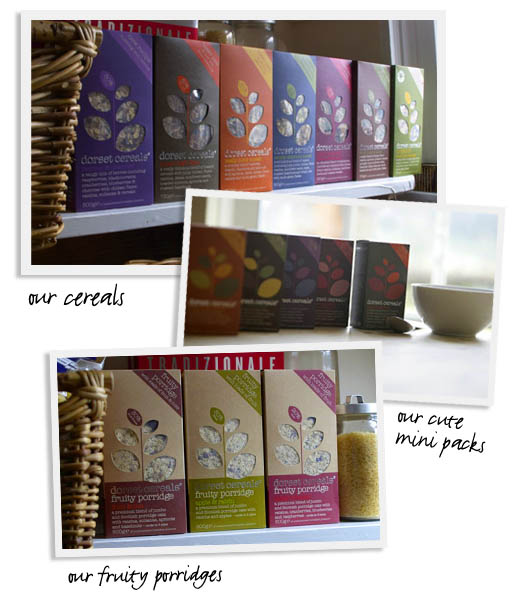
However, the hero of the hour is without a doubt the packaging. if there is ever going to be cereal packaging you want to display in your kitchen rather than stuffing into a cupboard, this is it. Cheerios they are not.
It is the shape of the boxes (squat and chunky), it is the flat secondary background colours, its is the typewriter typeface, it is the cereal shaped window onto the product and it is the sheer quality and feel of the cardboard (seriously), that make the packs as visually edible as the product.
The alliance of product quality, authenticity and packaging prowess screams out "I am justifying my price premium like you wouldn't believe".
And it doesn't stop there.
We talk alot about digital natives - the people for whom a digital life is instinctive because they have know no different. Well maybe we are seeing a bunch of brands emerging that are themselves digital natives, born (or in this case reborn) into a digital brandscape. And Dorset Cereals might just be one of them.
The online experience (designed by Big Fish) is built round a brand position that our greatest pleasures are life's simple pleasures. And to support this they offer us a simple pleasure to enjoy every single day of the year.
As I write they are celebrating World Book Day, with links to thebookguide (a comprehensive guide to sources of secondhand and antiquarian books)and readitswapit.co.uk that helps people swap books they have finished with.
And that is just today, yesterday's simple pleasure was the humble Primrose.
Infact what they are up to almost counts as a brand led community, with Dorset Cereal fans uploading photos of their own simple pleasure and a whole host of offline activities to get involved in.
Oh and the cereal tastes bloody brilliant too.
And as for success, well is not easy to figure out how sales are doing, but distribution is impressive and exports are going gangbusters, with 25% of production leaving these shores. This little taste of Dorset can be bought in no less than 60 foriegn markets which led to Dorset Cereals being given a Queens Award for Enterprise last year.
Dorset Cereals - a small change, a big difference and a dynamic micro brand fit for purpose in today's brandscape.
The Brand Catwalk - Good Energy
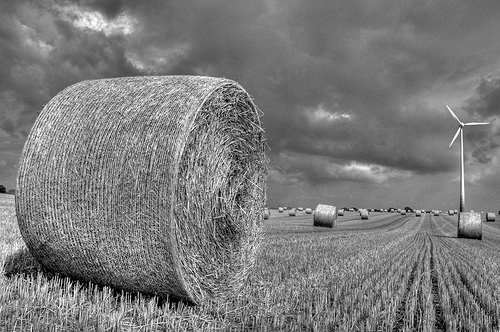 Image courtesy of Hans van Reenen
Image courtesy of Hans van Reenen
Brands help businesses fight the inexorable drift towards commoditisation - the point at which consumers can't tell the difference between the offerings in the marketplace and can only choose on price.
And you don't get much more commoditised than the UK energy market, where there is the square root of sod all to differentiate the miserable operations that try and claw out an existence in this market.
So price rules, especially in times of high wholesale energy prices.
However, there is one corner of the market where real difference is starting to emerge - green electricity tariffs and suppliers.
Green tariffs and suppliers allow people to chose between energy brands on something other than price - largely for people that want to cut their carbon footprint faster than their electricity bills. They do this by ensuring that for every unit that their customers consume a unit of renewable green energy is put into the system, displacing non-renewables over time.
All well and good.
However, rather unfortunately, the green tariffs have got a bit of a bad name recently. Largely because big electricity suppliers have a tiny minority of customers on green tariffs and therefore are still kicking seven types of shit out of the atmosphere. Indeed Greenpeace recently pulled their endorsement from N Power's 'Juice' tariff on this basis. If you have been seduced by N Power there is rather a good article about this on Julian Cope's Head Heritage site.
So you are better off sticking to one of the Green suppliers - however, rather infuriatingly many of these still draw some of their electricity requirements from non-renewables.
Just when you were about to give up on trying to be good, buy an SUV and sell your children into slavery, riding to the rescue for the ethical consumer comes (drum roll) Good Energy.

Founded in 1999 Good Energy is the only electricity supplier in the UK that offers 100% renewable generated electricity. The power for their 21,000 customers comes from over 250 small to medium renewable generators that run on wind, small scale hydro, wave, solar and sustainable biomass.
And if you start to micro-generate for your own use they will pay you for any surplus you produce and, bizarrely, pay you for simply generating and consuming electricity yourself - incentivising your good behaviour even if it doesn't benefit their bottom line.
No to mention that their identity is rather nice and their web experience is very simple. Indeed signing up is a piece of absolute piss.
I should just mention that this stuff is priced at a real premium.
However, the sign of a healthy brand is if it can justify and sustain a premium over the competition. And what price getting your Carbon footprint down into children's sizes? Apparently I'm going save 3,000Kgs of carbon a year with Good Energy, a reason for a moderate amount of smugness.
Plus if you do sign up they send you a bottle of Organic Red Wine to say thankyou - how on brand is that?
The environmental NGOs now fight shy of endorsing or ranking Green tariffs and suppliers and some people are critical that they are not building new renewable capacity themselves but Good Energy comes recommended by the Ethical Shopping Good Energy Guide and Innocent Smoothies.
Good Energy are a tiny but rather dynamic little brand in a sea of unedifying badness and blandness, building for themselves a customer base that will be a damn sight more stable and rewarding than that of the big energy suppliers. And hurrah for that.
The Brand Catwalk - NaCo
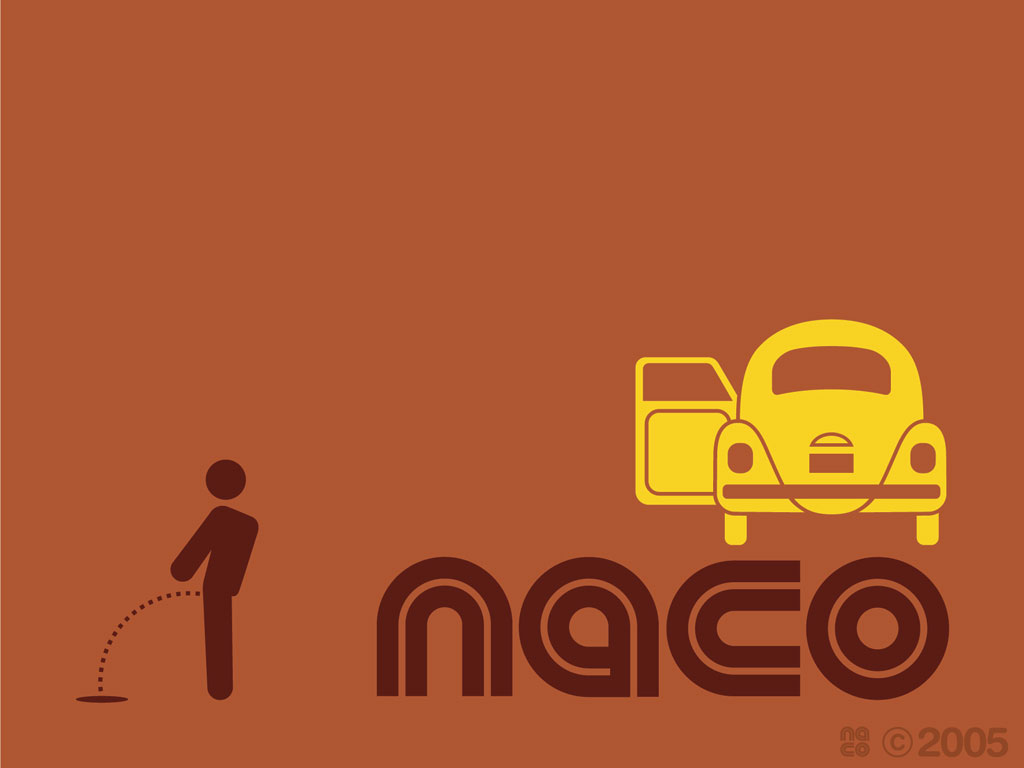
NaCo - making it cool to be uncool
So far every dynamic little micro brand I have sent down the catwalk has been from the UK or US.
So next up is a brand that has become a cult fashion label in Mexico City - NaCo. Set up in 2001 by Robby Vincent and Edoardo Chavarin, with the sum total of $500, the name NaCo is a play on the mexican word 'naco' and all that it means.For those of you un-familiar with Mexican slang, 'naco' is a term of abuse used for bad-mannered and poorly educated people and is used especially in relation to the indigenous population.
I guess it is a bit like the term 'Chav' in the UK or 'Trailer Trash' in the US but the sense I get is that it is meant to be, and is taken as being, rather more offensive.
In a society less concerned with correctness, middle-class Mexicans have traditionally used the term in a discriminatory manner against people who, in their opinion, like unusual fashions, use a lot of slang and speak with peculiar accents.
You get the picture - it was not exactly a term of endearment.
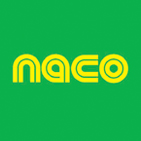
So producing a range of clothes emblasoned with the words Naco or sporting classic naco phrases like 'Estar Guars' and 'Pesci' (Naco for Star Wars and Pepsi respectively) should have been fashion suicide.
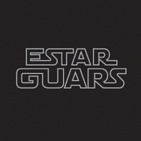
Instead the runaway success of Naco has propelled its founders - who initially seeded their clothes with music celebrities - into the relms of style demi-gods, searched out by big brands seeking to communicate with latin communities north and south of the border.

The end result has been to make it cood to be uncool on the streets of Mexico City and to begin to unpick some of the elitism of middle class Mexico.
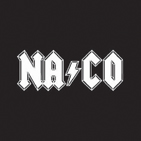
To be honest you have to see the stuff to 'get it' so toddle off to the Naco site and have a rummage.
Naco's website is here, but the US version maybe more helpful for the non-spanish speakers amongst you.
And a big thankyou to the adliterate reader in Mexico City who put me onto the NaCo phenomenon.
The Brand Catwalk - Hendrick's
Hurtling down the Brand Catwalk this week is that small but perfectly formed premium gin, Hendrick's and its one-brand assualt on, what Malcolm Gluck famously called, the Daily Telegraph Obituaries column image of gin and gin drinkers.
So heres what we know.
Gin is big but its not exactly the flavour of the moment. Sources disagree as to whether gin is in absolute decline or holding its own. But lets face facts, in the growth stakes vodka is kicking seven types of shit out of gin.
Undaunted, decade after decade the big boys of the Gin world try to revitalise the drink's image, in the blind hope that one more throw of the creative dice will see gin back on the path to growth. After all gin is a white spirit which is precisely what younger consumers want to drink.
Then along comes Hendrick's (admittedly in the company of one or two other premium gins like Tanqueray Ten) and shows them how to do it properly.
Start with the distilling expertise and heritage of William Grant (one of the few family owned independent distillers in Scotland) and wonderfully pure Scottish water. This will ensure that the resulting product has bags of prized authenticity, important to any successful brand and essential to spirits.
And then turn everything else you belive to be right and proper about gin on its head.
Don't bother joining the whittering match about juniper berries (every Tom, Dick and Gordon has those) but bung in cucumber and rose petals. Bonkers ingredients they may be but they are also highly evocative of English summer afternoons spent reading slim volumes of poetry and playing croquet in the grounds of your uncle's drafty country pile. This will reinforce refreshment cues and give you a distinctive way to serve the drink - over ice with tonic and slice of cucumber rather than lemon.
Stop brushing the 'mother's ruin' heritage under the shag pile but embrace it with the ferocity of a dog on heat. Wallow in the debauched world of 18th century London whose 17,000 gin houses were rapidly sending the capital to the dogs. In particular design your bottle to look like something straight out of Hogarth's Gin Lane. This will give you stand out on the back bar, curiosity value and a way in to a wonderfully rich visual language.
Wrap this counter category approach up in a personality that revels in the unusualness of the product - maybe publishing your own newspaper, holding an annual Chap Olympiad, encouraging bartenders to play croquet or providing rushed commuters with momentary relief.
And your away to the races.
Well this is exactly what William Grant have done with their Hendrick's gin brand abetted by Gyro, their Philadelphia based creative agency, and Propeller their digital agency.
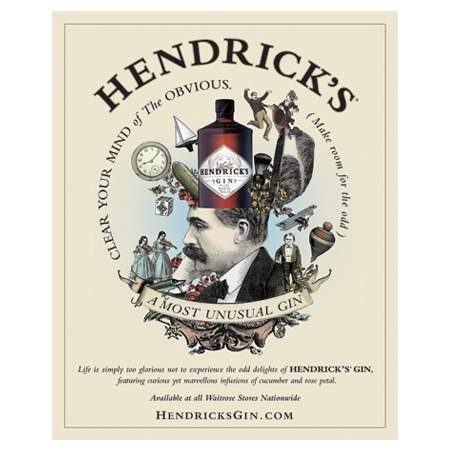
Hendrick's distinctive visual language
It is almost a faultless case study in the way to create and launch a brand these days.
Authenticity is king (not delivered by longevity but expertise) and product performance is absolutely paramount. But then the brand idea (the idea behind the brand) comes into play, guiding and driving evey facet of the brand from packaging to sampling and the online presence to sampling.
Hendrick's is now in its seventh year having launched in the US in 2000 and the UK in 2003. It is also in distribution in 21 other countries.
And it is succesful, hugely successful, delivering growth rates (65% year on year) that make even vodka look sluggish.
Sure this brand is never going challenge Gordons but that is not the point. It provides William Grant with a potent white spirits brand and delivers up a small but fanatical and fanatically engaged audience prepared to pay for a better drink and a better idea.
Anyone joining me at the Chap Olympiad?
The Brand Catwalk - Riverford Organic Vegetables
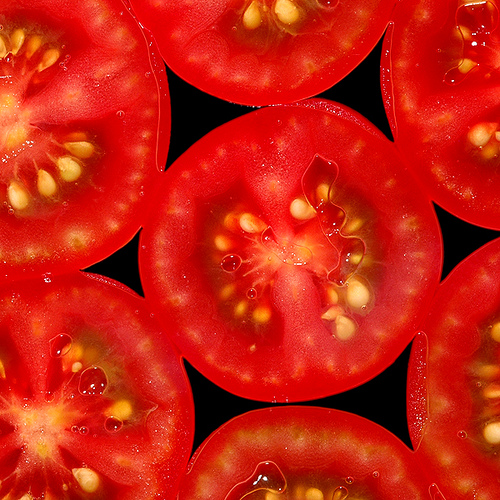
Image courtesy of RuneT
From 1974 to 1982 I lived in a part of the UK called South Devon, in a village called Dartington.
My father farmed the next door estate to a place called Riverford Farm.
In the late '70s and early '80s Riverford started thinking in earnest about agricultural diversification. This still contentious subject is essentially about expanding or replacing the revenue streams of a farm so it doesn't get so screwed by the supermarkets.
I remember them beginning this journey, when they started one of the first farm trails that actually invited the public onto farmland and into farms rather than shooting them on sight.
Then in 1986 Riverford began to convert to organic production, a process that takes about three years or so. The original intention was to supply organic produce to the supermarkets but after a rather unedifying altercation with the now defunct Safeway, they decided to take their produce direct to the consumer, and launched a organic vegetable box delivery service.
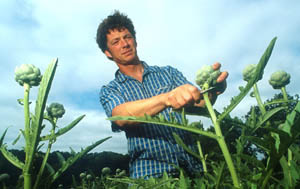
Guy Watson, Riverford supremo, severing artichoke heads
Today they deliver 30,000 vegetable boxes a week to homes throughout the South of England and, with sister farms in Peterborough and the North East, right up the East Coast of the country as well. That's a hell of alot of purple sprouting broccoli.
They are not the largest vegetable box scheme in the UK, that accolade still belongs to Able & Cole, but I love the way that it is the farm that is delivering the vegetables that they (and their neighbours) grow, rather than an intemediary. This is the source of the brand's authenticity.
However the reason for singling Riverford out is the idea behind the brand, that is what makes me interested both personally and professionally.
Clearly the environmental and health benefits of organic produce are incredibly important to Riverford's approach, but they are not the principle reason to buy.
At the heart of the Riverford philosophy is a belief that the only thing that realy matters is 'performance in the kitchen'. This brand is, first and foremost, about taste.
Vegetable varieties (85 in total) are chosen for flavour and not yeild maximisation or their resistance to damage during industrial washing. And they are offered only at the time of year when they taste at their best.
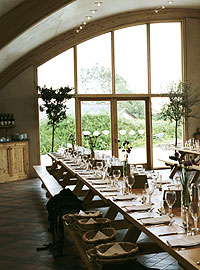
The Field Kitchen that helps to underpin Riverford's foodie credentials
Now I'm sure that they might protest at my obsession with the taste proposition and Guy Watson (Riverford's main man) has responded in very robust terms to the Government's assertions that there are no health beneifts to organic food - that it is a lifestyle choice. But for me it is the taste arguement that gives the brand its real strength - it is a long term platform for preference and elevates Riverford above the organic scrum.
I'm a complete convert, and while I can't get my hands on Method for love nor money (the subject of the last brand catwalk), every week we now take delivery of the most amazing tasting fruit and vegetables, fresh from the rolling hills of South Devon.
Additional images courtesy of Riverford
The brand catwalk
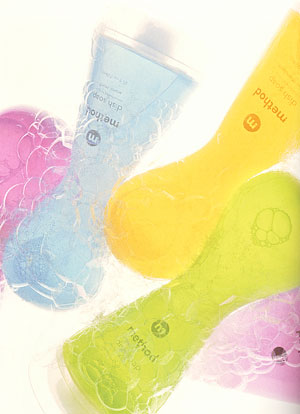 Each month I want to try and showcase a brand that has an interesting take on the market they operate in and ideally is built around a clear brand idea or ideal.
The first candidate to send down the catwalk for your edification and scrutiny is Method, the US personal and homecare brand - now available in the UK and Canada.
Each month I want to try and showcase a brand that has an interesting take on the market they operate in and ideally is built around a clear brand idea or ideal.
The first candidate to send down the catwalk for your edification and scrutiny is Method, the US personal and homecare brand - now available in the UK and Canada.
I was introduced to Method by Johnny Vulcan, of Anomaly fame, at the last Coffee Morning of 2006.
Half Molton Brown, half Ecover, Method combines houseproud style, efficacy and environmental care in one funky cleaning brand. And in doing so creates the sort of consumer desire that one usually expects from the drawing board of Jonathan Ive
The secret appears to be in the talented combination of co-founder Adam Lowry (a chemical engineer from Stamford),the packaging design and plastic wizardry of Karim Rashid and the brand nouse of co-founder Eric Ryan, an ex-adman (there is hope for all of us).

Adam and Eric in playful mood
But its is also that Method's brand idea is so potent, a brand idea encapsulated in the thought 'people against dirty'.
'People against dirty' tickles me for a number of reasons.
For starters it is the antithesis of Persil's 'Dirt is good idea' which as you all know I really like. But there is room in my heart for more than one breakthrough detergent strategy and I am loving 'People against dirty'.
At first sight it rather wonderfully embraces contemporary consumers who want their homes clean, clothes pristine and bathrooms well appointed. It is a home-care brand that gets beyond the post war idea of housework as a chore that needs to be completed as fast and with as little effort as possible. In part of course this is because many of Method's customers will have a rather casual relationship with the cleaning leaving that to the cleaner that they employ for the purpose. Nevertheless its a brand that celebrate cleanliness whereas the 'scientific' brands merely obsess about it and the environmental brands seem not to be that interested. This is the platform for an environmentally friendly brand to stand up it's efficacy credentials.
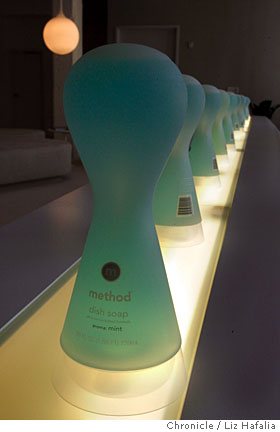
Fairy Liquid eat your heart out
But of course the idea is more fundamentally about a belief that there is no point in getting your clothes or hands clean if the results is you make the rivers dirty. Method is against all dirt wherever it is. This is the real traction in the brand idea especially for anyone like me that winces every time the Finish tablet is popped into the dishwasher. Method, like many of the brands we currently admire, has a strong point of view on the things that we care about and does something about it.
Interestingly in that context Persil's belief in dirt being good becomes rather worrying - an enthusiastic embrace of environmental destruction.
But this isn't merely an interesting brand it is an succesful one - Inc. magazine recently named it the seventh fastest growing private company in the US, in a sector that is absolutely stagnant and last year Method racked up sales of $44.9m.
I'm in love, not that I've yet experienced the product first hand. A ghastly UK e-commerce site means that I have as yet failed to get my increasingly filthy hands on any of this stuff and boy you should see the delivery charges - perhaps the Royal Mail is not the best way to get detergent into your house.
And here is the Method chart using the brand idea concept that I introduced last year.
By the way Crispin Porter have done some work for method that is on their site.